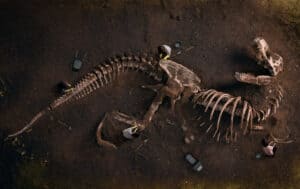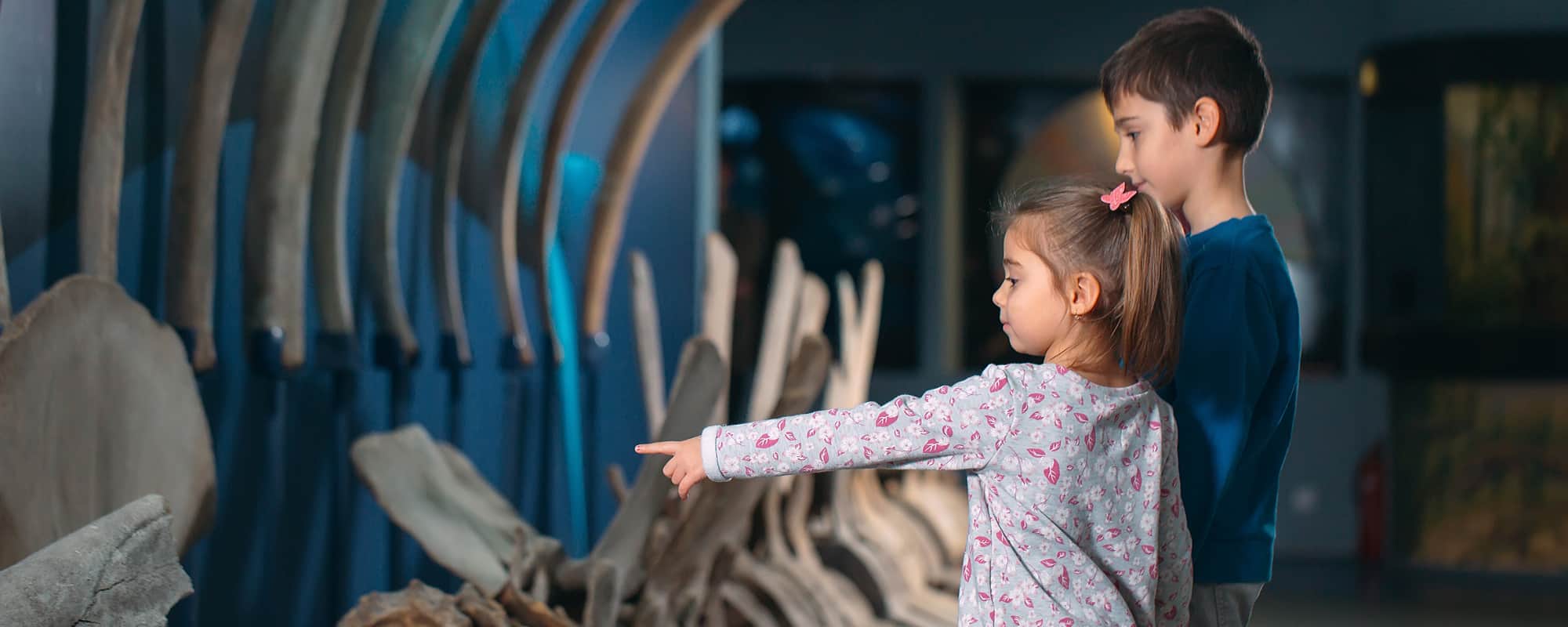What Are Dinosaurs?
Dinosaurs are prehistoric reptiles that lived on the Earth between 243 and 65 million years ago. Their closest living relatives are surprisingly birds, who themselves evolved from reptiles. Crocodiles are runner up to birds, but thankfully they’re not flying around! Many dinosaurs did have feathers and lay eggs so do have some things in common with today’s birds and other reptiles.
Despite the name Dinosaur meaning ‘terrible lizard’, many did not live up to the reputation of a T-Rex and enjoyed a calm herbivorous lifestyle trekking the lands of Pangea and Gondwana. Along with diet their sizes varied too, with ranges from a half a meter to 30 metres long! There’s still so much that we don’t know about dinosaurs, so every discovery provides a unique insight into the prehistoric past and a clue to how we got here.
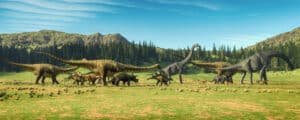
Jurassic, Triassic, Cretaceous … Huh?
Dinosaurs ruled the world for millions of years during what we now call the Mesozoic Era. This era is split into three geological periods – Triassic, Jurassic, and Cretaceous. During these periods, tectonic plates that make mountains and volcanoes moved. This means that Pangea, the one big continent that dinosaurs lived on began to split and separate into smaller ones. When this happened, the climate started to change and dinosaurs had to evolve to suit new conditions.
Although evolution happens over long periods of time, these changes drive the formation of new species. Because of all these geographic and climatic changes, the era was split into three distinct periods during which dinosaurs changed, evolved, speciated, migrated, and went extinct.
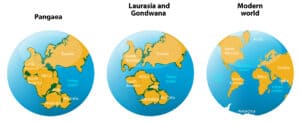
Why Are Dinosaurs Extinct?
There are two strongly supported theories believed to have contributed to the demise of dinosaurs 65 million years ago. In the 1970’s a crater was discovered, and then later confirmed to have been the result of an asteroid collision also 65 million years ago. The energy from this collision caused massive destruction and extinction due to mega-tsunamis, dust clouds, shock waves, wildfires, earthquakes, and volcanic eruptions.
This leads us into the next series of unfortunate events. Due to the geological disruption, earthquakes, and volcanic activity, the Earth became smoky, ashy, dark, and inhospitable. This means that many organisms that survived the asteroid were not able to survive the lack of sunlight, food, or clean water. This is now believed to be one of the main extinction events in history, killing approximately three quarters of life on Earth.
Because of all the dust and toxic volcanic smoke, the Earth also became hot and made it even harder for animals to survive – this is called a Greenhouse Effect. We see this effect happening now, it’s the main cause of climate change, but instead of volcanoes making it happen, it’s us!
What Are Fossils?
Fossils are created when an organism dies in a wet environment and gets buried in mud or silt before it can fully decompose. Over time, layers of sediment and rock build up which helps retain the form and structure of the organism. Fossilisation can occur in a few different ways, sometimes with crystals and rocks growing inside creating a perfect cast, and sometimes even trapping the organism in amber – go watch Jurassic Park to see this.
There can also be fossil records, these are findings that show the activity of creatures such as footprints, burrows, and even their fossilised poo. When it comes to dinosaurs, the chances of a fossil being created is very small (we’re talking many millions to one odds) – so it’s amazing that we’ve been able to find so many and learn so much. Coral and other sea creatures make up an abundance of fossils, they can even form reefs like parts of our Great Barrier Reef. Chances are you’ve seen some washed up on the beach too.

What Is Paleontology?
Paleontology is the study of fossils, not just dinosaurs but all sorts of flora and fauna (plants and animals). The field explores and tries to decipher a timeline of life on Earth, often involving many other research fields such as geology, biology, entomology, archaeology, and ethnobotany. Dinosaurs were officially discovered and named only 200 years ago by avid paleontologist Richard Owen while he was out searching for fossils. Although dinosaur fossils had been found earlier, the idea of a dinosaur wasn’t developed until quite recently. Since the discovery, many species have been found all over the world, and have helped paleontologists piece together a prehistoric timeline. Fossils also help us uncover and learn more about climate conditions, geological movements, extinction events, and so much more.
Dinosaur Facts
- Dinosaurs ruled the Earth for about 165 million years!
- There have been over 700 extinct dinosaur species discovered.
- Dinosaurs lived before the continent Pangea broke up, and after it started moving, which is why there are fossils found all over the world.
- Flying dinosaurs are not actually dinosaurs, they’re more like cousins.
- There are two types of dinosaurs, lizard-hipped (Saurischia) and bird-hipped (Ornithischia), ironically our birds evolved from reptile-hipped dinosaurs.
Dinosaur Fossil Dig Kit
What You Need 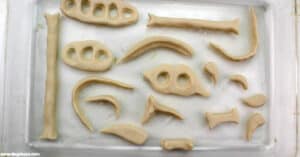
- Baking tray
- Baking paper
- 2 cups of flour
- 1 cup of salt
- 1 cup of water
- Sand or soil
- Small tray
- Paint brush
Method
Begin with preheating the oven to 180°C, and lining a tray with baking paper. Combine the flour, water, and salt to create the dough, then knead for two minutes.
Shape bones out of it – use your imagination and create your own dinosaur. Bake for 30 minutes, increasing baking time if bones are thicker than 2cms. Once complete, let cool and bury in a tray full of sand or soil. Now with brush in hand you’re ready to get digging.
Check Out Ology
Ology is a great science website for kids from the American Museum of Natural History. “Ology” means “the study of” – and on this site you can learn and explore the Ology’s online. The paleontology page shares a range of DIY activities, stories, games and facts to further promote curiosity, learn about dinosaurs and what it’s like to be a Paleontologist. Get involved and get excited – there’s still so much to be discovered!
